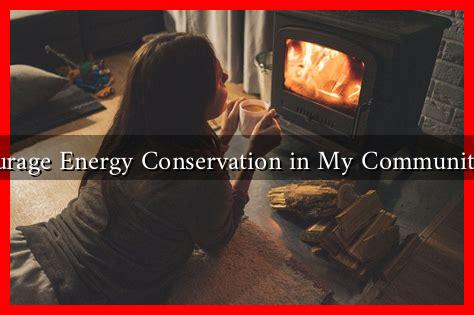-
Table of Contents
- How to Encourage Energy Conservation in My Community This Winter
- Understanding the Importance of Energy Conservation
- Strategies for Promoting Energy Conservation
- Case Studies: Successful Community Initiatives
- Statistics That Highlight the Need for Action
- Conclusion: Building a Sustainable Future Together
How to Encourage Energy Conservation in My Community This Winter
As winter approaches, the need for energy conservation becomes increasingly critical. With rising energy costs and environmental concerns, communities must come together to promote energy-saving practices. This article explores effective strategies to encourage energy conservation in your community during the winter months.
Understanding the Importance of Energy Conservation
Energy conservation is not just about saving money; it also plays a vital role in reducing greenhouse gas emissions and combating climate change. According to the U.S. Energy Information Administration, residential energy consumption accounts for about 20% of total energy use in the United States. By implementing energy-saving measures, communities can significantly reduce their carbon footprint.
Strategies for Promoting Energy Conservation
Here are several actionable strategies to encourage energy conservation in your community this winter:
- Organize Community Workshops: Host workshops that educate residents about energy-efficient practices. Topics can include proper insulation, energy-efficient appliances, and smart thermostats.
- Launch a Neighborhood Challenge: Create a friendly competition among neighborhoods to see who can reduce their energy consumption the most. Offer incentives such as gift cards or recognition in local media.
- Distribute Energy-Saving Kits: Provide residents with kits that include LED light bulbs, weather stripping, and energy-saving tips. This tangible support can motivate individuals to take action.
- Collaborate with Local Businesses: Partner with local businesses to offer discounts on energy-efficient products. This not only supports local commerce but also encourages residents to invest in energy-saving solutions.
- Utilize Social Media: Leverage social media platforms to share tips, success stories, and resources related to energy conservation. Create a dedicated hashtag to track progress and engage the community.
Case Studies: Successful Community Initiatives
Several communities have successfully implemented energy conservation initiatives that can serve as models for your own efforts:
- Seattle, Washington: The city launched the “Seattle Energy Challenge,” which encouraged residents to reduce their energy use by 10% over a year. Participants received personalized energy reports and access to energy-saving resources. The initiative resulted in a 5% reduction in energy consumption citywide.
- San Francisco, California: The “Energy Upgrade California” program provided homeowners with rebates for energy-efficient home improvements. This program not only reduced energy consumption but also created jobs in the local economy.
Statistics That Highlight the Need for Action
Understanding the impact of energy conservation can motivate community members to participate:
- According to the American Council for an Energy-Efficient Economy, energy efficiency can reduce energy consumption by 20-30% in residential buildings.
- The U.S. Department of Energy estimates that homeowners can save an average of $200 annually by implementing energy-efficient measures.
- In 2020, the International Energy Agency reported that energy efficiency improvements could help avoid 1.5 gigatons of CO2 emissions globally.
Conclusion: Building a Sustainable Future Together
Encouraging energy conservation in your community this winter is not only beneficial for individual households but also for the environment as a whole. By organizing workshops, launching challenges, and collaborating with local businesses, you can create a culture of energy efficiency. The success stories from other communities demonstrate that collective action can lead to significant reductions in energy consumption.
As winter approaches, let’s work together to make our community a leader in energy conservation. By taking small steps, we can create a lasting impact that benefits both our wallets and the planet. For more information on energy-saving practices, visit the U.S. Department of Energy’s Energy Saver website.

